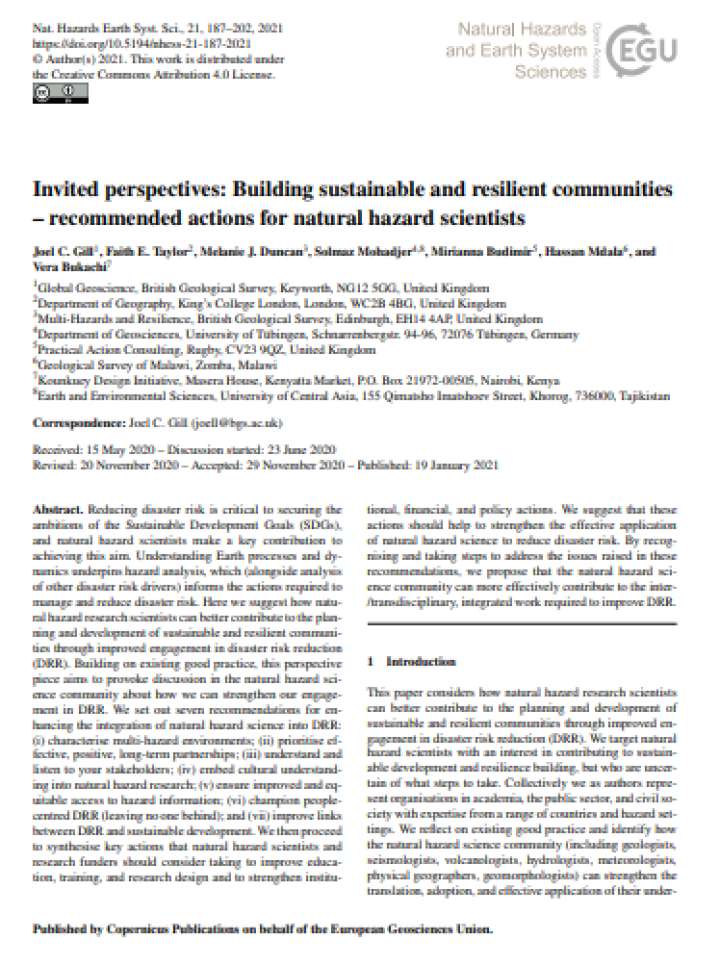Invited perspectives: Building sustainable and resilient communities – recommended actions for natural hazard scientists
In this paper, the authors suggest how natural hazard research scientists can better contribute to the planning and development of sustainable and resilient communities through improved engagement in disaster risk reduction (DRR). Building on existing good practice, this perspective piece aims to provoke discussion in the natural hazard science community about how we can strengthen our engagement in DRR.
The authors set out seven recommendations for enhancing the integration of natural hazard science into DRR:
- characterise multi-hazard environments;
- prioritise effective, positive, long-term partnerships;
- understand and listen to your stakeholders;
- embed cultural understanding into natural hazard research;
- ensure improved and equitable access to hazard information;
- champion people-centred DRR (leaving no one behind);
- and improve links between DRR and sustainable development.
They then proceed to synthesise key actions that natural hazard scientists and research funders should consider taking to improve education, training, and research design and to strengthen institutional, financial, and policy actions. They suggest that these actions should help to strengthen the effective application of natural hazard science to reduce disaster risk. By recognising and taking steps to address the issues raised in these recommendations, they propose that the natural hazard science community can more effectively contribute to the inter-/transdisciplinary, integrated work required to improve DRR.
Explore further
